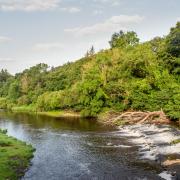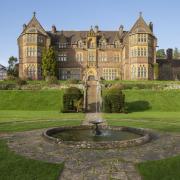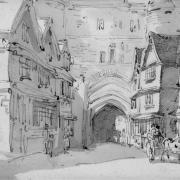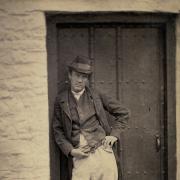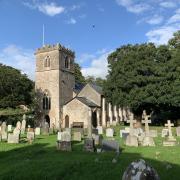Anyone reading this article is likely to have travelled on Devon's 1,142 mile network of turnpike roads. Part of some of today's busiest routes, turnpike roads did more than anything else to open the county to trade and communications with the rest of Britain between 1750 and 1850 and were, with canals, an essential element in launching the Industrial Revolution.
It is hard today to imagine how isolated inland Devon was before the mid-18th century, when most roads were no better than rough tracks, poorly maintained if maintained at all, and frequently impassable in winter. Carts, coaches and wheeled traffic of any sort was rarely seen in large parts of the county; bulk transport was by teams of up to 40 packhorses bearing their loads on panniers, personal travel by horse or foot. The fastest communication with the rest of Britain was by sea and Devon had extensive coastwise trade.
Turnpike trusts were private enterprises authorised by Act of Parliament to charge tolls to repair, widen and straighten existing roads and build new ones. Most were small concerns raised to meet local needs, like the Countess Wear Trust, which owned only two miles of road. Others, such as the Exeter Trust with 141 miles, were much larger. Devon’s first turnpike trust, it was formed in 1753.


Turnpike trusts have also bequeathed a fine heritage of bridges. Postbridge, for instance, was built in 1790 and the arched bridge at nearby Two Bridges dates from 1792. Both are on the Moretonhampstead to Tavistock road (B3212), turnpiked in 1772 and stand by far older clapper bridges, as does Dartmeet’s turnpike bridge (1792). Shaldon Bridge (1827) was financed by tolls until 1948. Other good turnpike trust bridges include Totnes Bridge, designed by Charles Fowler in 1828 and Cowley Bridge, built in 1814 by James Green, Devon’s surveyor of bridges and buildings, who was responsible for 70 bridges around the county. Built of iron in 1834, Exeter’s New North Road Bridge enabled coach traffic easy entry into the city.

The A30, recognisably a Roman road along its original course between Honiton and Exeter because of its straightness, was upgraded to a high standard with the then revolutionary engineering of John MacAdam, who used layers of small stones, rolled and bound to form an effective and durable road. This enabled the Telegraph coach to leave the Old and New London Inns in Exeter at 5am and reach London a mere 17 hours later - a journey worthy of Mister Pickwick and one Charles Dickens would have been familiar with on his visits to the city. Fares on the Telegraph were 35 shillings outside and 70 shillings inside - making them proportionally far more expensive than today's transport. Sixty coach and omnibus services ran from Exeter during the early 19th century, eight of them going to London.
Turnpike trusts also built entirely new roads to avoid the worst of the hills on the older routes. The Copplestone to Barnstaple route, which superseded the old road over the hills between Morchard Bishop and Chulmleigh in 1831, is a good example.
Pre-turnpike trust roads are not hard to recognise in Devon because they are so different. The county's numerous winding lanes form the bulk of its road mileage and are definitely pre-turnpike in character; most date from the Anglo-Saxon settlement. They follow any route which would save a day's labour, going around boulders and trees from one farm to the next, or simply to the fields.

Pack horse roads can be found by pack horse bridges, as at Fingle Bridge, Drewsteignton. Whilst some pack horse routes, such as the B3212 over Dartmoor, were improved by the turnpikes, others, like the Abbot's Way, are little changed and now used as footpaths and bridleways. Off the moor, wherever you see a couple of hedgebanks close together with a track between, you can be fairly sure that one of Devon's old roads lies there.
These roads evidently did not impress up-country visitors. A writer in a 1752 edition of The Gentleman's Magazine observed that a Londoner would no more think of travelling to the West of England for pleasure than he would of going to Nubia. His remark was not entirely in jest. Before the great improvements brought by turnpike trusts, a journey to Devon was a major undertaking, long and tedious. Now, the wheel has come full circle. With Devon's roads increasingly congested and polluted, any road building schemes are sure to draw sharp protests and the deep isolation most of the county endured before turnpike roads can look idyllic.
Further information:
martinebdon.co.uk/turnpikes
Devon Roads That Time Forgot, Paul White, Bossiney Books






